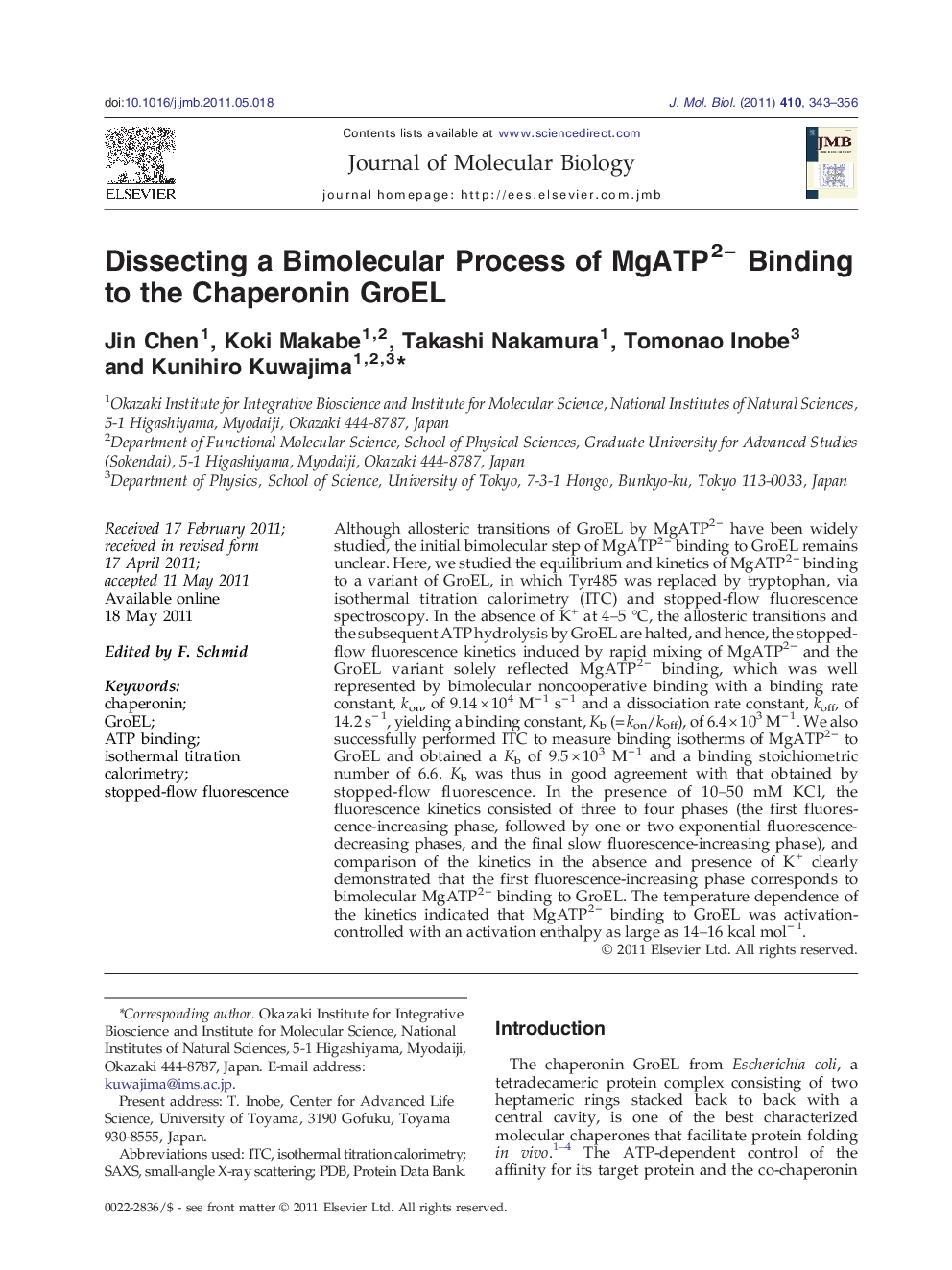| Article ID | Journal | Published Year | Pages | File Type |
|---|---|---|---|---|
| 2185200 | Journal of Molecular Biology | 2011 | 14 Pages |
Although allosteric transitions of GroEL by MgATP2− have been widely studied, the initial bimolecular step of MgATP2− binding to GroEL remains unclear. Here, we studied the equilibrium and kinetics of MgATP2− binding to a variant of GroEL, in which Tyr485 was replaced by tryptophan, via isothermal titration calorimetry (ITC) and stopped-flow fluorescence spectroscopy. In the absence of K+ at 4–5 °C, the allosteric transitions and the subsequent ATP hydrolysis by GroEL are halted, and hence, the stopped-flow fluorescence kinetics induced by rapid mixing of MgATP2− and the GroEL variant solely reflected MgATP2− binding, which was well represented by bimolecular noncooperative binding with a binding rate constant, kon, of 9.14 × 104 M− 1 s− 1 and a dissociation rate constant, koff, of 14.2 s− 1, yielding a binding constant, Kb (= kon/koff), of 6.4 × 103 M− 1. We also successfully performed ITC to measure binding isotherms of MgATP2− to GroEL and obtained a Kb of 9.5 × 103 M− 1 and a binding stoichiometric number of 6.6. Kb was thus in good agreement with that obtained by stopped-flow fluorescence. In the presence of 10–50 mM KCl, the fluorescence kinetics consisted of three to four phases (the first fluorescence-increasing phase, followed by one or two exponential fluorescence-decreasing phases, and the final slow fluorescence-increasing phase), and comparison of the kinetics in the absence and presence of K+ clearly demonstrated that the first fluorescence-increasing phase corresponds to bimolecular MgATP2− binding to GroEL. The temperature dependence of the kinetics indicated that MgATP2− binding to GroEL was activation-controlled with an activation enthalpy as large as 14–16 kcal mol− 1.
Graphical AbstractFigure optionsDownload full-size imageDownload high-quality image (86 K)Download as PowerPoint slideResearch Highlights► MgATP2− binding to GroEL was characterized by ITC and stopped-flow fluorescence. ► The binding reaction is activation-controlled with a significantly positive ΔH‡. ► The result was interpreted in terms of partial dehydration in the activated complex.
